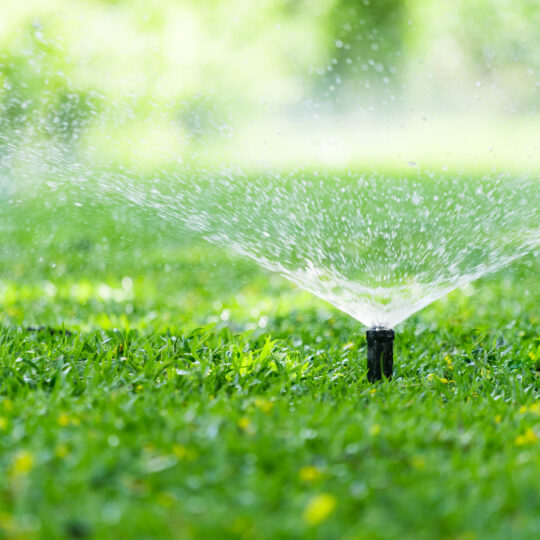5 Proper Lawn Watering Practices
Prevent Self-Induced Damage

It’s possible to water your lawn too much and too little. Finding the right balance helps achieve lush, healthy green grass. Otherwise, you could be left with lawn damage and disease from poor drainage or drought. Learn what proper watering practices help prevent self-induced lawn damage.
Signs of Stressed Grass
Do you know how to tell if your grass is getting enough water? Some signs of turf stress include brown patches and weed growth, but this doesn’t always indicate if you’re watering too much or not enough. Here’s how to tell:
- Assess moisture level. Before watering, probe the soil a few inches deep. If it’s still moist underneath the surface, it’s good. If it’s dry, it’s time to water.
- Consider grass and soil type. Familiarize yourself with the type of grass and soil in your yard. It all has varying water requirements. Sandy soil drains quickly while clay soil holds water longer. Warm- and cool-season grasses are also affected by the weather differently.
- Look for specific signs. Underwatered grass typically appears thin and dull. Overwatered lawns may also be discolored, but it will most likely feel soggy or show signs of fungal growth as well.
Once you’ve determined what your grass needs, it’s still important to practice proper watering techniques to keep it healthy.
Proper Lawn Watering Practices
To help prevent damaging your lawn by watering too much or too little, keep these proper practices in mind:
- Adjust for weather. If it’s been cool and wet, you can reduce the amount of water you provide. If it’s been hot and dry, your lawn may need more water.
- Water deeply and infrequently. In order to promote strong roots, provide enough water to penetrate the surface and encourage the roots to follow it deep into the soil. This is better than shorter, more frequent watering that results in shallow roots which are more susceptible to disease and drought damage.
- Aim for the A.M. Watering in the morning allows the grass to absorb the moisture before it evaporates in the heat of the day. It also gives the grass enough time to dry, reducing the risk of fungal disease.
- Aerate. Breaking up the soil helps to open channels for air and water to flow, allowing for better drainage and root growth.
- Use the right tools. Rain gauges help measure the amount of water received by rain or sprinkler systems. Ideally, your lawn should get about an inch of water per week. If the gauge shows otherwise, adjust your watering schedule. Underground irrigation helps deliver water directly to the root zone. A smart controller helps adjust schedules based on weather.
By paying attention to your lawn’s specific needs, you can help ensure it gets the right amount of water. While you can’t always control the weather, you can help promote healthy grass growth and prevent damage by adjusting your own watering practices.